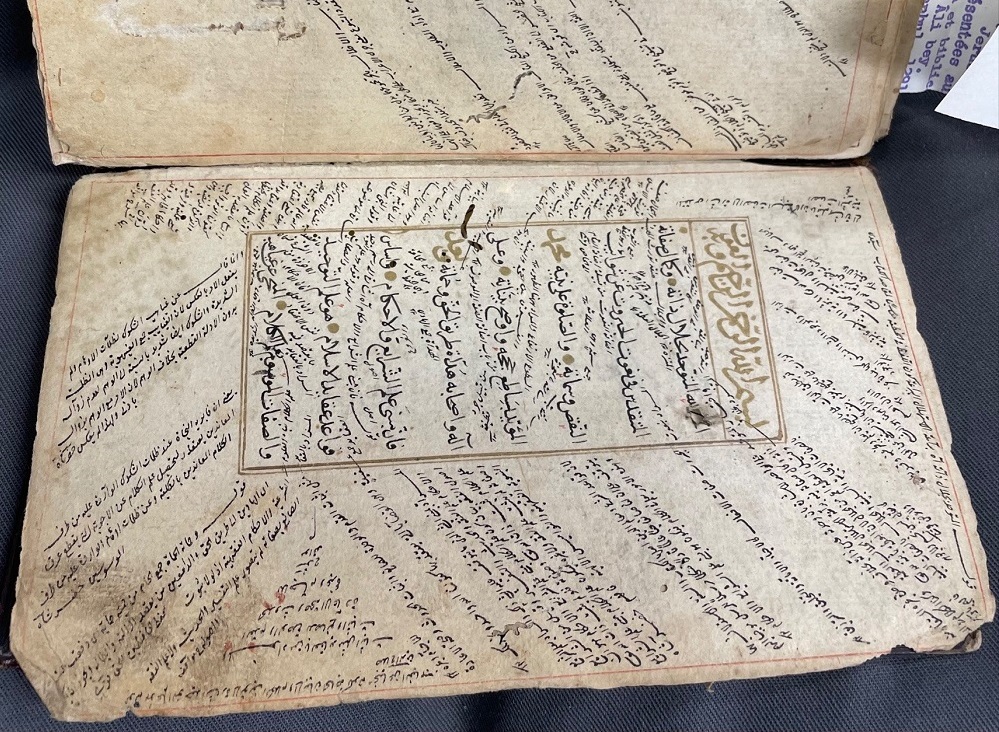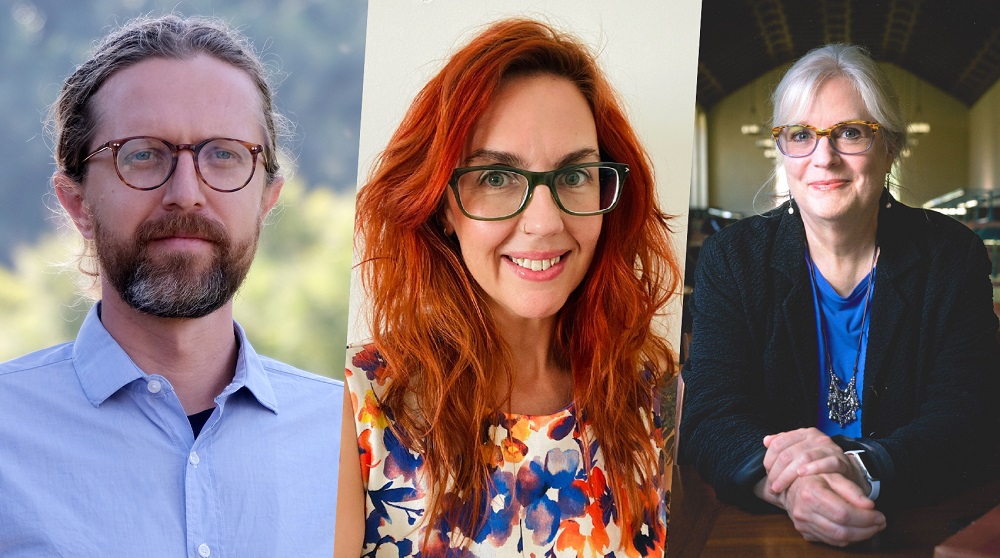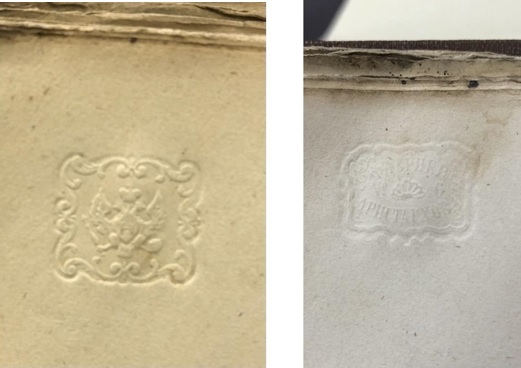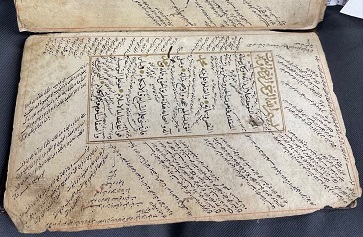Students make remarkable finds in UCLA’s ‘Encountering Arabic Manuscripts’ course

Scholars’ notes surround a central box containing a 14th-century Persian scholar’s commentary on a 12th-century Islamic religious tract. | UCLA Library Special Collections
If there was any question that UCLA Library Special Collections’ vast array of handwritten medieval manuscripts in Arabic, Persian and early Ottoman Turkish contained undiscovered historical gems and unique avenues for groundbreaking research, just ask doctoral student Brooke Baker.
While studying an untitled text as part of UCLA’s “Encountering Arabic Manuscripts” course, Baker found that it contained a work by Abd al-Wahhab al-Sha’rani, the 16th-century mystic and scholar who founded an Egyptian order of Sufism, a mystical branch of Islam. Thinking she might have stumbled onto something rare, she showed it to Associate Professor Luke Yarbrough, who teaches the course.
“On a hunch, Brooke and I shared this discovery with Adam Sabra, the King Abdul Aziz Ibn Saud Chair in Islamic Studies at UC Santa Barbara, who has worked extensively on Sha’rani,” Yarbrough recalled. The verdict? “He knew of only three other manuscripts of this type in the world — two in Egypt and one in Saudi Arabia — and was unaware of UCLA’s.”
This remarkable discovery is just one of several that have been made in the course, an ongoing collaboration between UCLA’s Islamic studies program and UCLA Library. Library Special Collections, which houses a world-class assortment of archives, books, manuscripts, photographs and other materials available to students, faculty and the public, provides an invaluable resource for such partnerships.
“The UCLA Library’s Middle Eastern and Islamic manuscripts collection is one of the largest and most comprehensive in the world, totaling at least 8,000 manuscripts,” said Ginny Steel, UCLA’s Norman and Armena Powell University Librarian. “These collections encompass rare and beautiful illuminated manuscripts, poetry and literature, significant medical and scientific tracts, and works of historical importance.”

From left: Luke Yarbrough, Jet Jacobs and Ginny Steel. | Smadar Bergman and Elena Zhukova
The course itself began with a conversation between Yarbrough, who studies early and medieval Islamic history, and Jet Jacobs, the head of public services, outreach and community engagement for Library Special Collections.
“Since 2018, Library Special Collections has taught or facilitated over 300 classes using our materials. This means more than 10,000 students have interacted with over 25,000 rare and unique items, leading to a number of discoveries and research pathways,” Jacobs said. “The majority of these were undergraduate classes; it’s important to embed primary-source literacy into the undergraduate curriculum so that students feel empowered to conduct original research and envision themselves as knowledge creators.”
Although Library Special Collections works with faculty across campus, supporting classes in history, English, science, dance, studio art and beyond, this particular collaboration was sparked in part by the fact that the Middle Eastern and Islamic manuscripts collection has not yet been extensively catalogued — a remarkable opportunity for students and faculty to plumb its unknown depths.

Russian stamps indicating the provenance of the paper used for a copy of a work by the 16th-century Sufi ʿAbd al-Wahhāb al-Shaʿrānī. | UCLA Library Special Collections
Beyond the wealth of knowledge available in each manuscript, many offer intriguing windows into the past. Marginal annotations, personal notes and even stamps from libraries across the centuries give invaluable insight to those seeking to understand specific works in their full context. Using such clues, another doctoral student in Yarbrough’s course, Hinesh Shah, was able to identify a manuscript as having belonged to specific officials of the 18th-century Mughal Empire of South Asia.
► Discover more about the unique finds by Baker, Shah and other students in the course
In fact, this research is so promising that an anonymous donor recently gave UCLA a $100,000 gift to support the preservation, cataloging and accessibility of the manuscript collection for anyone wishing to explore it. In particular, the gift will allow graduate students to further expand their cataloguing work.
“This collaboration benefits us all — we rely completely on Library Special Collections for their archival and preservation expertise, while the scholarly community can help make meaning out of the collections,” said Yarbrough. “Another important piece of the puzzle comes with members of the broader L.A. community who are interested in these manuscripts for what they represent religiously and culturally.”
After all, connecting the world with UCLA’s research and resources underpins the course, the collaboration and the work of Library Special Collections and the Islamic studies program.
“There is no end to the potential of Library Special Collections materials to encourage new areas of research and stimulate curiosity,” Jacobs said. “Our holdings consist of everything from stone tablets and medieval manuscripts to born-digital resources and contemporary artists’ books, and we are always looking for opportunities to engage our communities with these significant cultural heritage materials.”
This article originally appeared in the UCLA Newsroom. For more of Our Stories at the College, click here.




